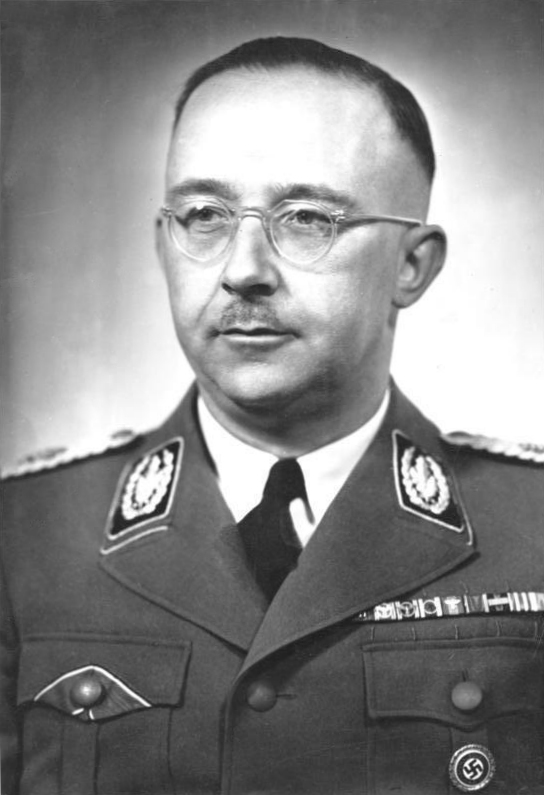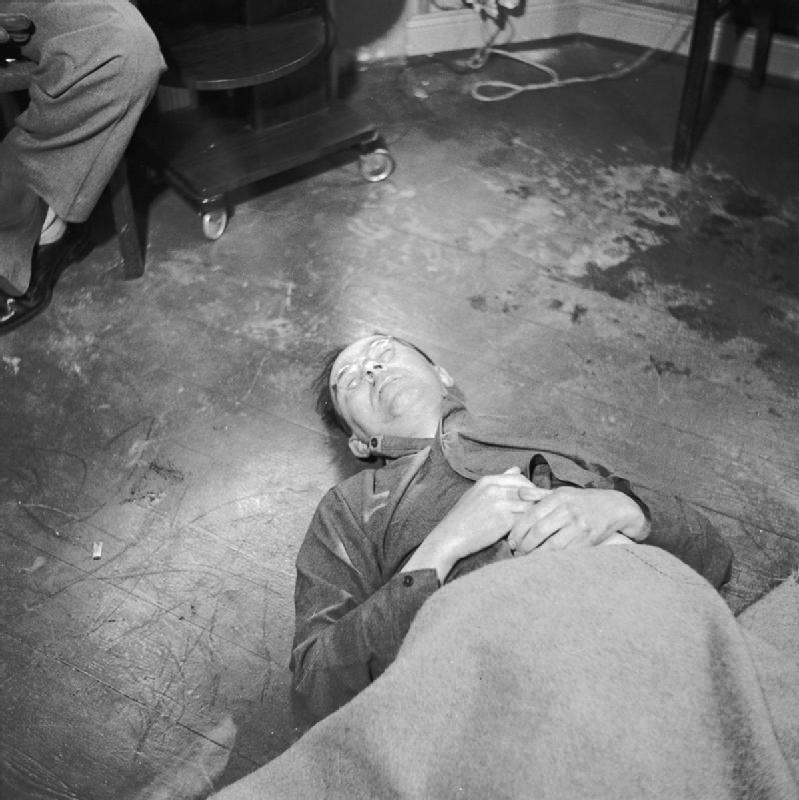On May 21, 1945, at a checkpoint in Northern Germany, a group of former Soviet prisoners of war apprehended three German soldiers attempting to evade capture. Among them was one with a shaved head and an eye patch, which initially attracted the soldiers’ attention. His documentation identified him as Sergeant Heinrich Hitzinger. The German prisoners were subsequently transferred to various camps over the following days until they were taken to Civil Interrogation Camp Number 31 near Lunenburg.

At this point, British Captain Thomas Sylvester initiated a series of standard inquiries with the sergeant. When Hitzinger finally removed his eye patch and donned small circular glasses, he requested to speak with either American General Eisenhower or British General Montgomery. To Sylvester’s astonishment, he revealed his true identity: his name was Heinrich Himmler. If this was indeed the case, Allied officials had on their hands one of the most wanted Nazi leaders. Following Hitler’s suicide, Himmler had emerged as a pivotal figure within the Nazi party.
Since its inception and even during the last months of the war, he had played a leading role in the fight against the Soviets. However, the imminent collapse and fall of the Third Reich turned Himmler into an erratic and incompetent man who tried to negotiate a belated peace with the Allies. This ultimately led to him being declared a traitor by Hitler himself.
It is evident that Himmler’s role within the Third Reich cannot be underestimated. Since his appointment as Reichsführer-SS in 1929, he expanded the Nazi forces, which initially numbered only a battalion of 290 men but grew rapidly to encompass thousands under Himmler’s leadership. During World War II, the Reichsführer-SS, renowned for his exceptional organizational skills, directly oversaw the creation of concentration camps and orchestrated the Holocaust, effectively overseeing the mass murder of millions of people.
Concurrently, he fulfilled his role as head of the SS and played a leading role in the Wehrmacht’s advance into Eastern Europe. However, by 1945, the situation had drastically changed. The Third Reich found itself increasingly surrounded by the advances of the United States from France and the Red Army in the East.

Following the failure of his efforts to halt the Americans as Commander-in-Chief of Army Group Upper Rhine in January 1945, Himmler was appointed Commander-in-Chief once more, this time of Army Group Vistula. His objective was to halt the advancing Soviet forces nearing Berlin. In retrospect, Hitler’s decision was ultimately misguided. Himmler lacked the requisite military experience to undertake such a critical mission. Simultaneously, this loyal Nazi leader grew increasingly skeptical of Nazi Germany’s prospects of winning the war. Despite his doubts, he obeyed orders and established his command center at Schönwalde, utilizing his special train, the “Sonnenwagen,” as its headquarters during these tumultuous weeks of planning.
Himmler’s behavior became increasingly erratic. He seldom departed from his train, which was inadequately equipped for its mission, lacking essential communication devices such as a telephone line and maps or radio for communication with the front lines. Moreover, Himmler demonstrated a lack of interest in his duties, viewing them as a mere ceremonial obligation. He typically worked only four hours a day, following a morning massage, lunch, and a long nap.
The absence of efficacious leadership became manifest in the German Army’s performance on the Eastern Front. On April 20th, with the Third Reich’s collapse imminent, Himmler met Hitler for the last time at the Reich Chancellery in Berlin to celebrate the Führer’s birthday. While Himmler professed allegiance to Hitler until the end, the reality was quite different. Since the arrival of spring, Himmler had been secretly negotiating peace with the Allies behind Hitler’s back. On the day after Hitler’s birthday, Himmler met with Norbert Masur, the Swedish representative of the World Jewish Congress, to discuss the liberation of several concentration camps, seeking to save himself from the impending Allied capture.
In a brazen assertion, Himmler claimed that the gas chambers at Auschwitz were used exclusively to burn the corpses of victims of typhus epidemics. Additionally, he claimed that the survival rate at Auschwitz was remarkably high, despite the camp having been liberated and the Allies being aware of the atrocities committed by the Nazis there. However, he suggested that the full extent of these atrocities may not have been fully recognized by the Allies.
In the days that followed, Himmler met with the President of the Swedish Red Cross, Folke Bernadotte. Bernadotte informed him that Hitler would soon be dead and asked Himmler to contact Dwight Eisenhower to discuss the terms of German surrender. Despite efforts to maintain confidentiality, a BBC bulletin revealed the negotiations on April 28th. Hitler was incensed and denounced Himmler as a traitor, subsequently dismissing him from the Nazi Party and all positions. Two days later, Hitler committed suicide in his bunker. However, the justice that Himmler had promised the Allies was not forthcoming. Eisenhower rejected the belated peace proposal and labeled Himmler Nazi Germany’s greatest war criminal. At the war’s end, the once-powerful Nazi leader was isolated and considered a traitor by the new German administration under Admiral Karl Dönitz and the most wanted man by the Allies.
Having exhausted his options, Himmler fled to Flensburg in northern Germany, where he hid for several days. On May 20th, as the Allies advanced on the city, he and a small group of German soldiers attempted a desperate escape. He shaved off his trademark mustache, removed his glasses, shaved his head, and donned an eye patch. Wearing military police uniforms, they attempted to flee to the south, but the escape plan was thwarted just two days later when they were apprehended by former Soviet prisoners. After disclosing his true identity in an effort to negotiate with the camp’s commanding officer, Himmler was taken to a physician for diagnostic testing to confirm his identity. During the examination, the physician discovered a black object embedded in the lower jaw of the Nazi. Upon attempting to remove it, the doctor was bitten by Himmler, who had concealed a cyanide capsule in his lower jaw. Despite the best efforts of medical professionals, Himmler was pronounced dead shortly thereafter. His remains were subsequently interred in an undisclosed location in Lüneburg.

Himmler was survived by his family, including his daughter, Gudrun Burwitz, who pursued a similar path to her father in the realm of National Socialism. Moreover, she denied the Holocaust and asserted that her father, the prominent Heinrich Himmler, had not committed suicide but had been killed. In addition, all available evidence and studies indicate that the official account is accurate. One of the most significant figures responsible for a great deal of death and destruction departed this world without facing trial or punishment for his actions.